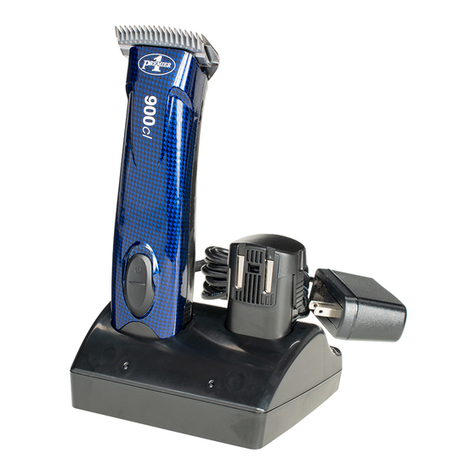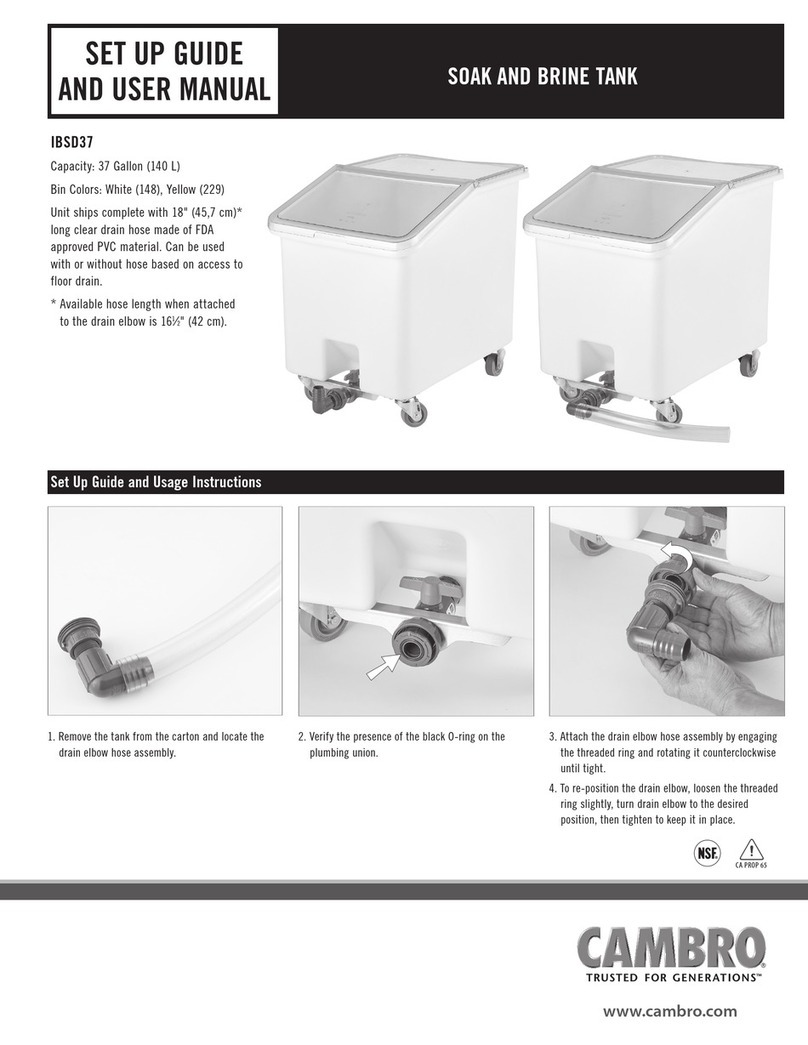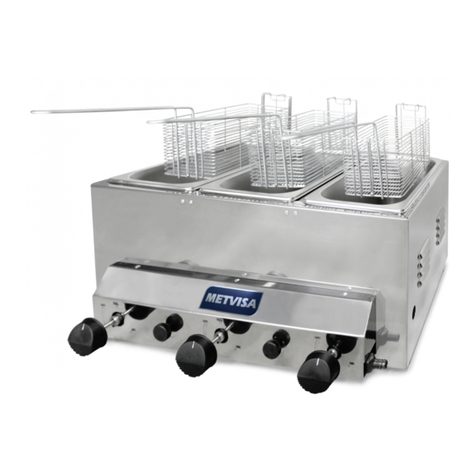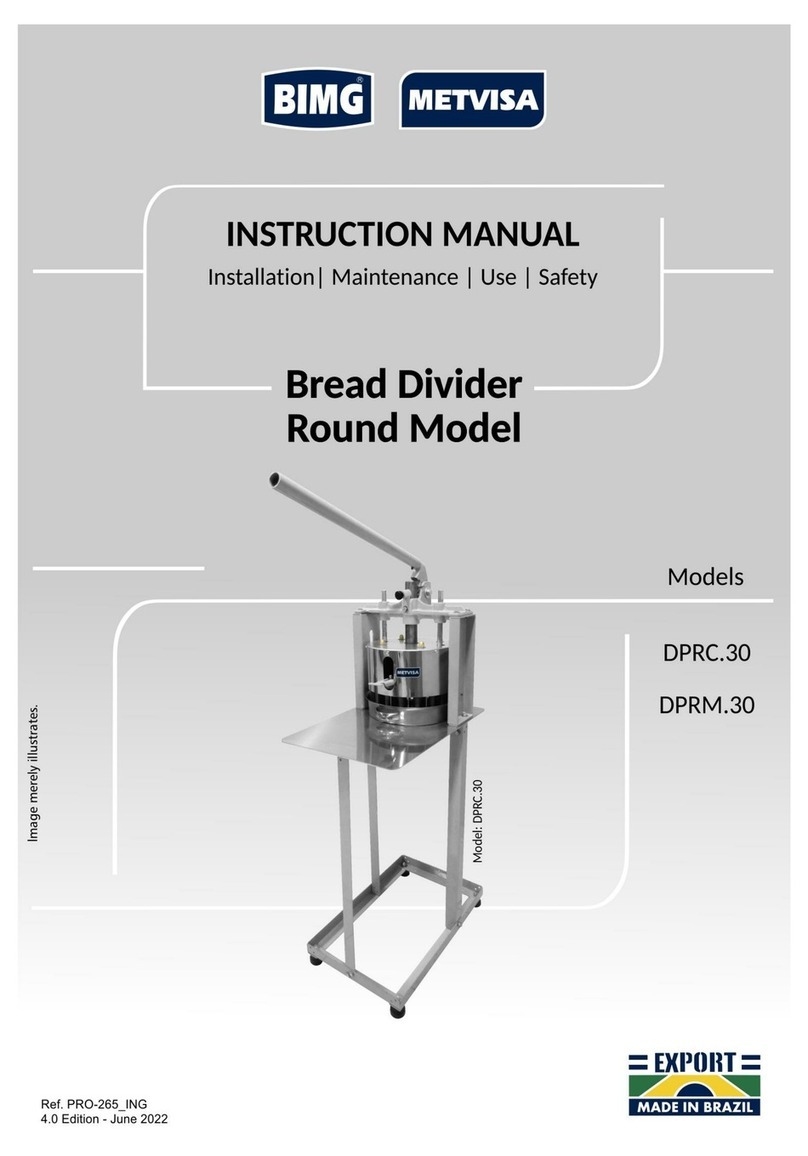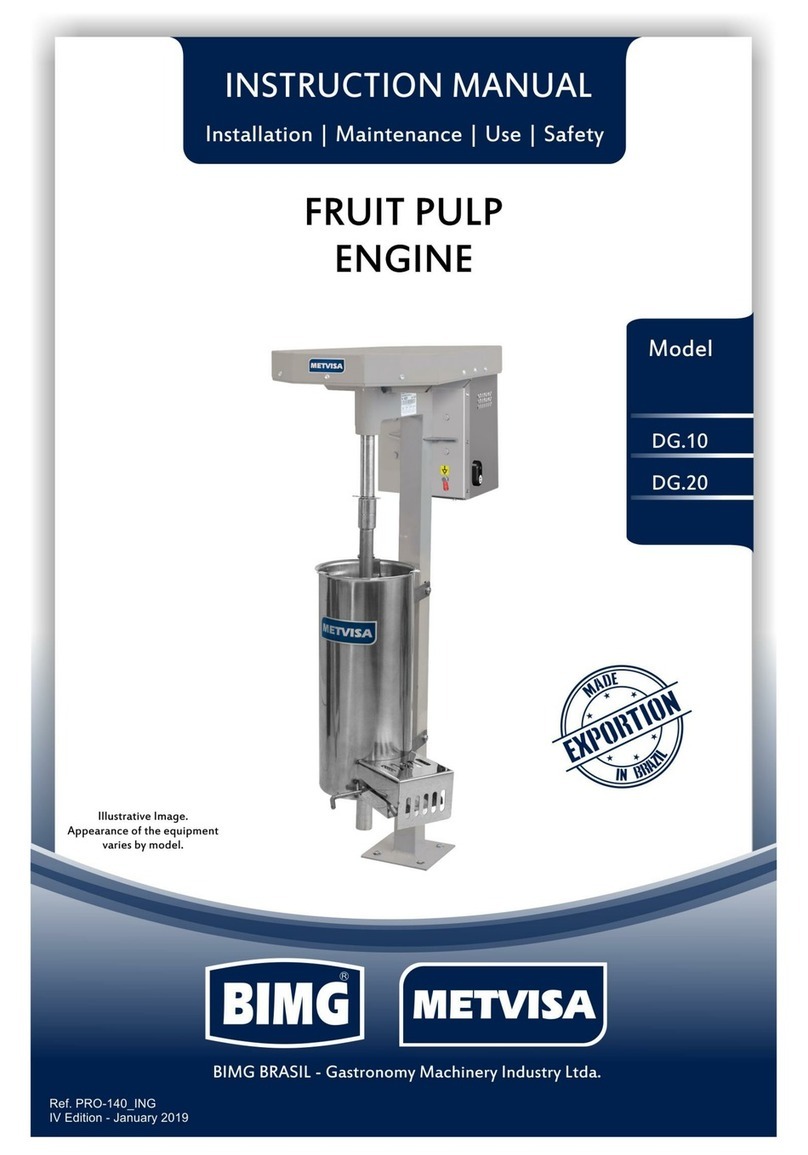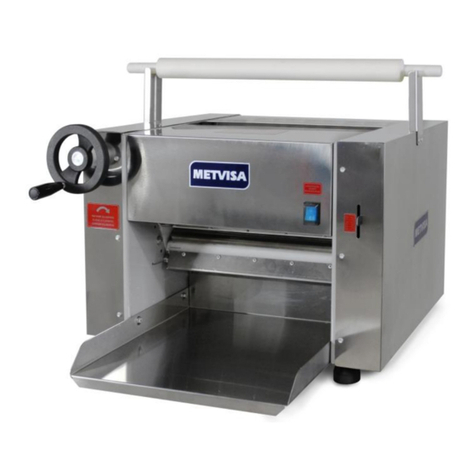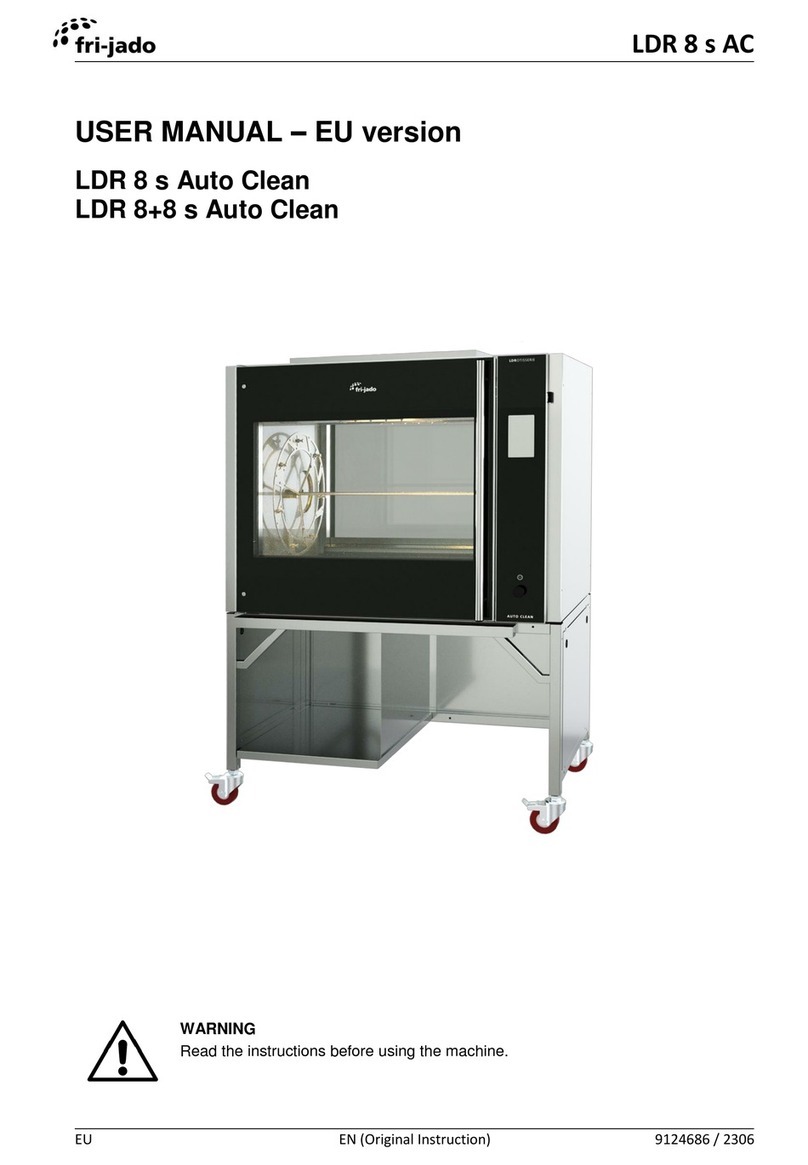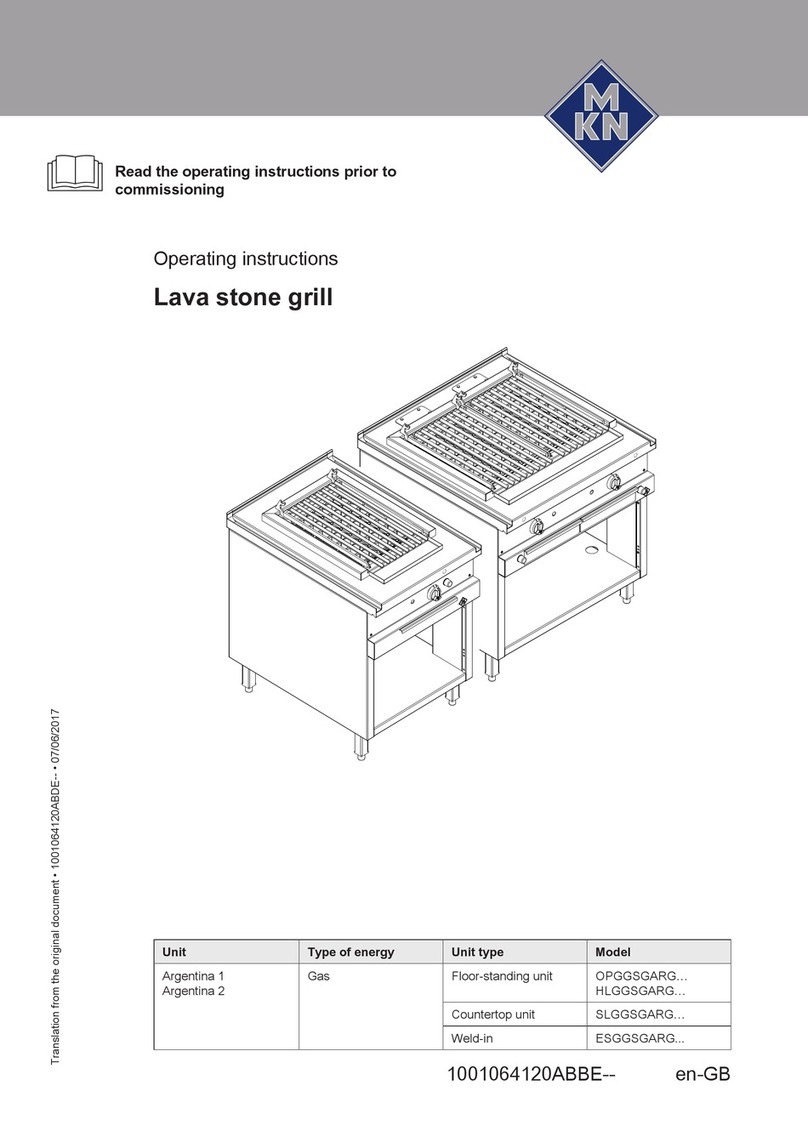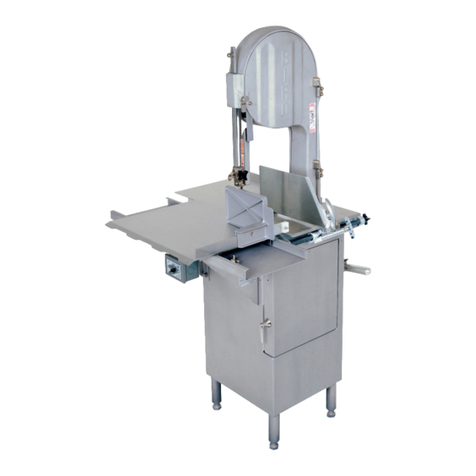
7
1.3 Electrical Safety
• Periodically check the condition of the cables and electrical parts;
• If the power cord is damaged, it must be replaced with a new one. The exchange must be made by
the manufacturer, authorized agent or a qualified person in order to avoid risk;
• Do not use a water jet as this may cause electric shock. To clean your equipment, follow the
instructions in item 5 of this manual;
• Do not operate the equipment in damp locations or wet clothing and shoes. Wear proper footwear,
this will prevent electric shocks and even death;
• Lay the equipment on a firm, dry, level surface;
• Never carry out any maintenance, adjustment or disassembly of the equipment connected to it. For
such procedures, make sure that it is turned off by removing the plug from the electrical mains;
•Do not use extension cords or adapters with several other devices connected to them. This may
cause a fire or an overload;
Components used for safety against electrical hazards have been selected in accordance with
applicable standards. Given the perfect insulation of all the electrical parts and the excellent resistor
of all the materials used, this unit is able to carry out the works to which they are proposed.
CAUTION!
Whenever any item regarding the safety of the equipment (such as cleaning or maintenance)
is removed, reset it and confirm that it is performing its function correctly.
2. Technical Characteristics
2.1 Main Components
For the equipment described in this manual, safety in use, cleaning, maintenance and
maximum hygiene are guaranteed by the design and special design of all parts and also by using
stainless steel and other materials suitable for contact with the dough.
The equipment was built with the following characteristics:
• Front guard, side guards, back cover, gutter, low table, and ruler (graduated ruler), made of stainless
steel, which has superior corrosion resistance to other steels. It is a material resistant to the attack of
several corrosive agents;
• The plastic scraper made of PE (polyethylene) plastic and the PVC plastic mixture roller are both
non-toxic, odorless, impact and corrosion resistant materials;




